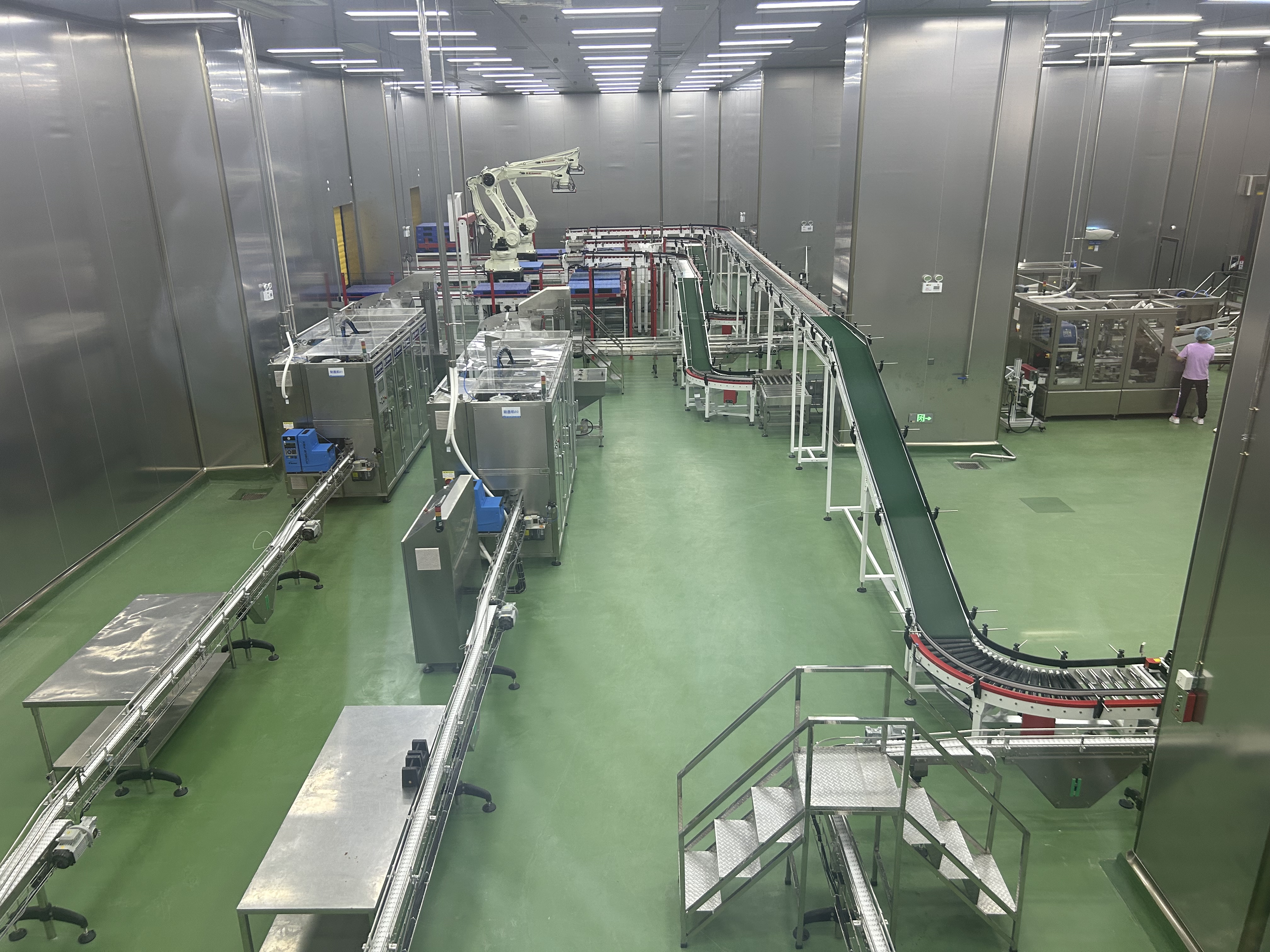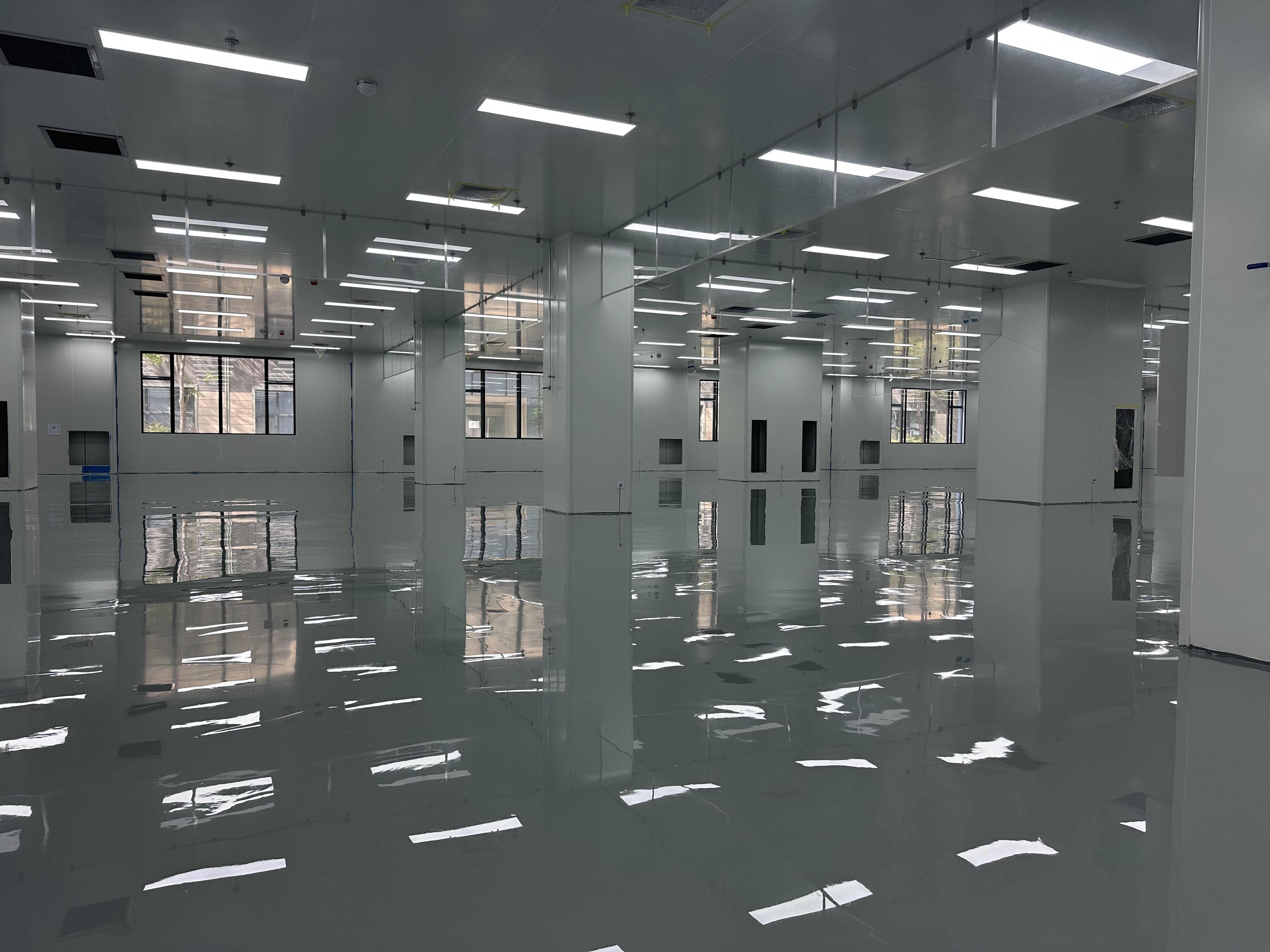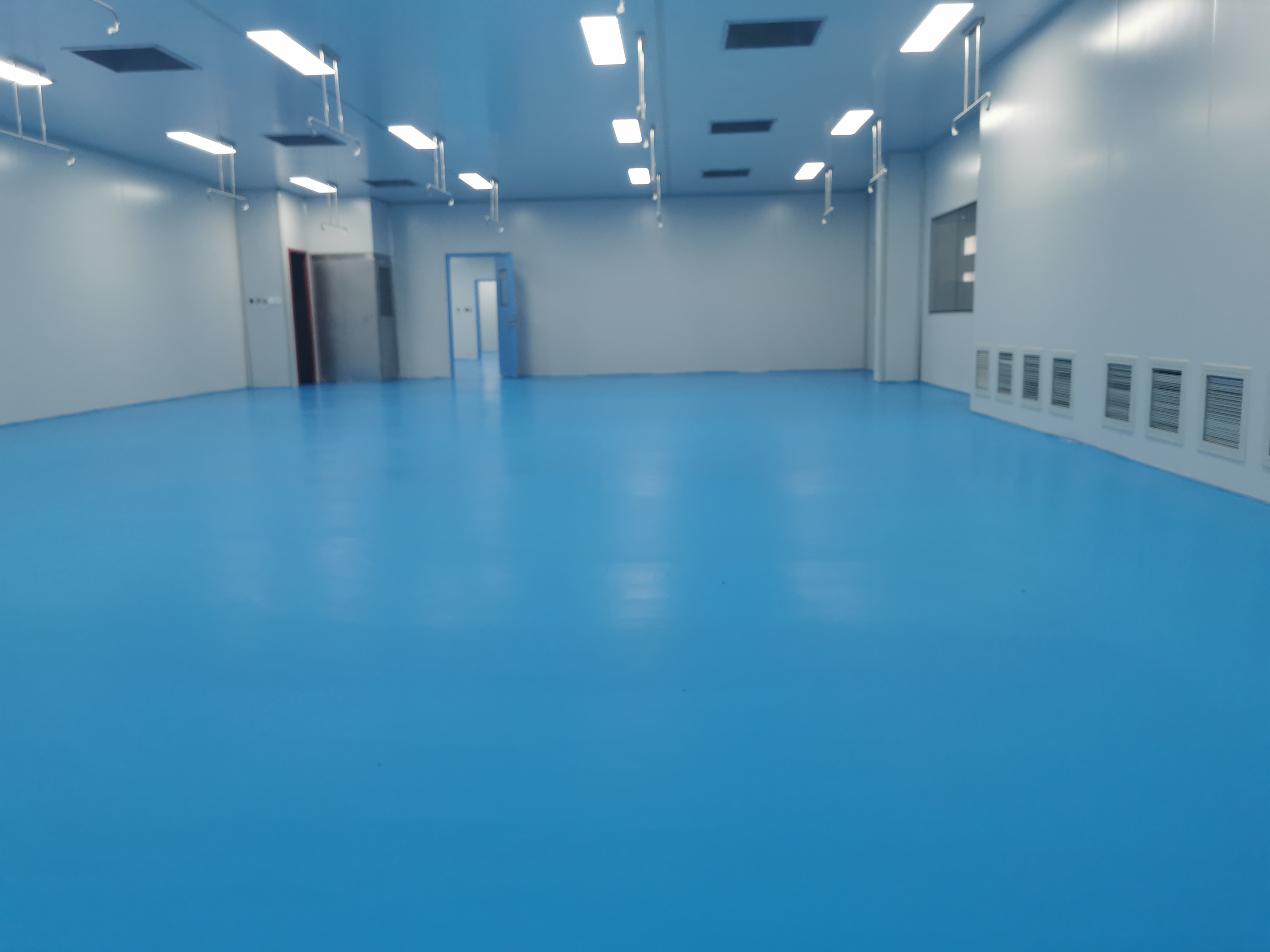Polyurethane Floor Paint: A Practical Guide to Enhancing Floor Durability and Aesthetics
I. Introduction For those seeking to improve the durability and aesthetics of their floors, polyurethane floor paint is undoubtedly a popular choice. This type of paint offers particularly significant advantages in high-traffic areas such as bathrooms, kitchens, and workshops, providing reliable protection for floors while enhancing the visual appeal of the space.

Why is polyurethane floor paint worth considering? Its key benefits can be summarized as follows:
Exceptional Durability: Polyurethane coatings effectively resist daily wear and tear. Even with long-term use, floors can maintain a good condition, reducing damage caused by frequent foot traffic and friction.
Chemical Resistance: It acts as an effective barrier against spills of common household chemicals (e.g., cleaning agents, sauces), preventing floor corrosion.
Easy Cleaning & Maintenance: Floors coated with polyurethane have a smooth surface. Daily cleaning only requires simple wiping or sweeping, eliminating the need for complex cleaning processes and saving users considerable time and effort.
Long-Lasting Aesthetics: This paint retains its sheen for an extended period, resisting fading or loss of texture. It keeps floors visually appealing at all times, elevating the overall style of the space.
Polyurethane forms a tough protective film on the floor surface, which not only shields the underlying floor material from damage but also simplifies cleaning and maintenance. Even in high-frequency use environments, it ensures floors maintain a good appearance and performance for an extended period.
Whether you are a contractor responsible for maintaining high-usage commercial spaces or a DIY enthusiast looking to upgrade your home’s floors, this guide will provide practical insights into using polyurethane floor paint to help you successfully complete your floor coating project.
II. Understanding Polyurethane Floor Paint
(1) Types of Polyurethane Floor Paint
Polyurethane floor paint is mainly divided into two categories: water-based and oil-based, with distinct characteristics and applicable scenarios.
Water-based polyurethane floor paint is widely favored for its low odor and fast-drying properties. It is an ideal choice for indoor spaces with limited ventilation, as it reduces the impact of unpleasant odors on humans during construction. Additionally, it has a low content of volatile organic compounds (VOCs), making it more environmentally friendly and aligned with modern eco-friendly concepts.
Oil-based polyurethane floor paint forms a harder coating and is often recommended for high-traffic areas such as bathrooms and corridors. However, this type of paint has a strong odor during application and tends to yellow over time, which may affect the floor’s appearance to some extent.
(2) Advantages of Polyurethane Floor Paint
Polyurethane floor paint is renowned for its durability and flexibility. The tough protective coating it forms can withstand the pressure of heavy foot traffic, delivering excellent protection in both residential and industrial settings.
Its main advantages are as follows:
Abrasion Resistance: It effectively resists wear caused by foot traffic, furniture movement, and pet activity, reducing scratches and damage on the floor surface and extending the floor’s service life.
Chemical Resistance: It provides excellent protection against spills of household chemicals in areas like kitchens and bathrooms, preventing floor damage from chemical erosion.
Easy Maintenance: The smooth, hard coating simplifies daily cleaning—regular sweeping or wiping is sufficient to keep the floor clean. This is particularly suitable for busy households or commercial spaces, reducing cleaning burdens.
(3) Durability of Polyurethane Floor Paint
Durability is one of the standout features of polyurethane floor paint. When applied correctly, the coating can maintain good condition for several years without frequent repairs. This exceptional durability makes it a preferred material for floor decoration in high-traffic areas, providing long-term protection for floors during extended use.
III. Application Process for Polyurethane Floor Paint
To achieve a smooth, durable finish with polyurethane floor paint, a series of rigorous application steps must be followed. Each step is crucial and directly impacts the final quality of the project.
(1) Preparation Work
First, thoroughly clean the floor to remove dust, dirt, and grease from the surface. If the floor has been previously painted, lightly sand the surface with sandpaper to create a rough texture—this enhances the adhesion between polyurethane and the floor, preventing subsequent coating peeling.
Second, inspect the floor surface for cracks or holes. If any are found, fill them with materials such as wood putty. Once the putty dries, sand the filled areas to ensure the floor surface is level, laying a solid foundation for subsequent construction.
Finally, clean the dust generated by sanding. Use a vacuum cleaner to remove large areas of dust, then wipe the floor surface carefully with a damp cloth to ensure no dust particles remain—this prevents dust from affecting the smoothness and adhesion of the coating.
(2) Priming (If Necessary)
Not all polyurethane floor paints require a primer. However, if explicitly recommended by the manufacturer or if the floor substrate is special (e.g., concrete), an appropriate primer must be applied. The primer further enhances the adhesion between polyurethane and the floor, improves coating durability, and ensures subsequent coatings perform optimally.
When applying the primer, use suitable tools to ensure even coverage of the floor surface, avoiding missed spots or excessively thick coatings. After application, wait for the primer to dry completely according to the product instructions before proceeding to the next step.
(3) Applying the Paint
1. First Coat Application: Use a high-quality wool applicator or brush to apply an appropriate amount of polyurethane floor paint evenly onto the floor surface. During application, control the pressure and speed to avoid paint pooling or running, ensuring a consistent coating thickness.
2. Drying: After applying the first coat, allow it to dry thoroughly. Drying time varies depending on the type of polyurethane, indoor humidity, and temperature, ranging from a few hours to an entire night. During drying, maintain good ventilation in the construction area and avoid foot traffic or placing objects on the undried floor to prevent coating damage.
3. Sanding Between Coats: Once the first coat is completely dry, lightly sand the coating surface with fine sandpaper (320-grit is typically recommended). This step removes surface imperfections (e.g., small particles, brush marks) and increases surface roughness, facilitating better adhesion of subsequent coats. Sand gently to avoid damaging the coating.
4. Subsequent Coats: Repeat the above steps to apply at least 2-3 more coats of polyurethane floor paint, with drying and sanding between each coat. More coats result in a harder, more durable final coating, providing comprehensive protection for the floor.
5. Final Drying: After applying the last coat, allow the floor to dry completely before use. This process typically takes up to 24 hours, depending on the paint product instructions and actual environmental conditions. During final drying, continue to maintain good ventilation in the area and avoid any actions that could damage the coating.
By strictly following these steps, you can create an attractive, durable polyurethane floor coating that keeps the floor in good condition during long-term use.
IV. Comparison Between Polyurethane and Epoxy Floor Coatings
When selecting a floor coating, understanding the differences between polyurethane and epoxy—two common coatings—is crucial. Each has unique properties and is suitable for different application scenarios. Below is a comparative analysis of their key properties: impact resistance, scratch resistance, flexibility, and substrate compatibility.
(1) Impact Resistance
Polyurethane exhibits excellent impact resistance, making it ideal for areas with heavy foot traffic or potential object drops. Its good flexibility allows it to absorb energy upon impact, effectively preventing coating cracking and providing reliable impact protection for the floor.
Epoxy, on the other hand, is hard and rigid. While it has a certain degree of impact resistance, it is more prone to chipping and cracking than polyurethane when subjected to heavy impacts, resulting in relatively weaker impact resistance.
(2) Scratch Resistance
Both polyurethane and epoxy perform well in terms of scratch resistance, but their strengths vary by scenario.
Polyurethane coatings, especially water-based ones, have strong scratch and abrasion resistance. In residential and commercial spaces where furniture and other items are frequently moved, they effectively reduce scratches and wear on the floor surface, keeping the floor clean and tidy. They are highly suitable for spaces with high requirements for aesthetics and durability.
Epoxy floors also offer scratch resistance, but wear marks are more visible during use. They are better suited for industrial environments, where heavy machinery is the main equipment used and aesthetic requirements for floors are relatively low—epoxy’s durability can meet the needs of industrial scenarios.
(3) Flexibility
Flexibility is a significant advantage of polyurethane over epoxy. Polyurethane has good bending and stretching properties; even in environments with large temperature changes or slight substrate movement, it can maintain coating integrity, effectively preventing cracking and extending the floor’s service life.
Epoxy is highly rigid and lacks flexibility. When the floor substrate is stressed or displaced due to external forces or environmental changes, the epoxy coating is prone to cracking, which limits its application in certain specific environments.
(4) Substrate Compatibility
Selecting a suitable coating also requires considering its compatibility with the floor substrate, as different coatings have varying adhesion and performance on different substrates.
Polyurethane has wide applicability and can bond well with various substrates, including concrete, wood, and even some metals. Its good flexibility and strong adhesion make it a preferred coating for floors with diverse substrates, resulting in a wide range of application scenarios.
Epoxy is particularly suitable for concrete substrates—it forms a strong, durable bond with concrete and is widely used in decorating concrete floors in industrial and commercial spaces. However, due to its high rigidity, its use is limited on substrates prone to displacement or bending, making it difficult to achieve ideal performance.
In summary, polyurethane and epoxy each have advantages and are suitable for different scenarios. Polyurethane excels in impact resistance, flexibility, and substrate compatibility, making it more suitable for residential and commercial spaces. Epoxy has advantages in scratch resistance and bonding with concrete substrates, making it more suitable for industrial environments. When selecting a coating, comprehensive consideration should be given to the specific application scenario, substrate type, and performance requirements for the floor.
V. Maintenance Methods for Polyurethane-Coated Floors
To keep polyurethane-coated floors in good condition and extend their service life, scientific and reasonable maintenance is essential. Below is a detailed introduction to maintenance methods for polyurethane-coated floors, covering four aspects: living scenarios, coating types, factors affecting service life, and practical maintenance tips.
(1) Maintenance Based on Living Scenarios
Polyurethane-coated floors face different usage frequencies and wear risks in different living scenarios, so maintenance methods should be adjusted accordingly.
In high-traffic areas (e.g., living rooms, kitchens, corridors), floors withstand heavy daily foot traffic, leading to relatively faster coating wear. For these areas, increase cleaning frequency—sweep or vacuum surface dust daily and thoroughly clean with a damp mop and mild detergent weekly. Additionally, place non-slip mats at key locations (e.g., doorways, corridors) to reduce friction damage from sand and gravel on shoe soles; install soft rubber pads under furniture to avoid scratching the coating when moving furniture.
For humid areas (e.g., bathrooms, balconies), although polyurethane has a certain degree of water resistance, long-term humid environments may still affect coating life. Therefore, promptly wipe up water stains on the floor to prevent long-term standing water; regularly inspect the joints between the floor, walls, and sanitary fixtures. If minor cracks appear in the coating, use a dedicated repair agent to fill them promptly to prevent moisture from seeping into the substrate.
(2) Adjusting Maintenance Strategies by Coating Type
Different types of polyurethane floor paint coatings have varying properties and tolerance levels, so maintenance methods should be adjusted accordingly.
High-Gloss Coatings: These coatings have high gloss and bright visual effects, but surface scratches and dust are more visible. During maintenance, avoid using rough cleaning tools (e.g., steel wool, hard-bristled brushes); use soft cloths or microfiber mops for cleaning. Avoid placing sharp objects directly on the floor to prevent scratches. For minor surface scratches, gently wipe with a dedicated floor polish to restore gloss.
Matte Coatings: Matte coatings have a soft gloss and better scratch concealment but relatively weaker abrasion resistance. Use neutral detergents for cleaning—avoid strong alkaline or acidic cleaning products to prevent coating corrosion. Regularly (every 3-6 months) apply a dedicated matte floor conditioner to the surface to enhance coating abrasion resistance and water resistance.
Satin Coatings: Satin coatings combine the advantages of high-gloss and matte coatings, with relatively low maintenance difficulty. Follow conventional cleaning methods for daily maintenance and apply a simple wax coating monthly to enhance gloss and extend service life.
(3) Key Factors Affecting Coating Life
Understanding the factors that affect the life of polyurethane-coated floors helps target maintenance efforts and extend their service life.
First, construction quality: If the substrate is not thoroughly cleaned, the coating is applied unevenly, or inter-coat drying is insufficient during construction, the coating will have poor adhesion and be prone to peeling or flaking. Therefore, strictly follow maintenance requirements after construction and avoid early use.
Second, environmental factors: Long-term high temperatures, low temperatures, or drastic temperature and humidity changes can cause the coating to expand and contract thermally, accelerating aging and cracking. For example, near heating or air conditioning vents, adjust the wind speed during equipment operation to avoid direct airflow on the floor; in summer, avoid prolonged direct sunlight—draw curtains to reduce UV-induced fading of the coating.
Finally, usage habits: Frequent dragging of heavy objects, walking on the floor with spiked shoes, or placing high-temperature items (e.g., hot pots, space heaters) directly on the floor can cause irreversible damage to the coating. Therefore, develop good usage habits to reduce unnecessary wear.
(4) Practical Maintenance Tips
1. Daily Cleaning Taboos: Avoid using strong alkaline cleaners (e.g., washing powder, dish soap), as these products can damage the coating’s protective film and cause loss of gloss. Do not soak the floor in large amounts of water for a long time to prevent moisture from penetrating the substrate, leading to floor deformation or coating peeling.
2. Regular Deep Maintenance: Conduct deep maintenance on the floor every 1-2 years. Gently sand the coating surface with fine sandpaper (320-grit) to remove the aged surface layer and minor scratches, then clean thoroughly and apply a thin layer of polyurethane topcoat to restore the floor to a like-new condition.
3. Damage Repair Methods: For local coating damage (e.g., small scratches, peeling), first sand the area around the damage to smooth it, remove dust, then use a small brush to apply a small amount of polyurethane paint for repair. After drying, lightly sand with fine sandpaper to ensure a smooth transition between the repaired area and the surrounding coating.
VI. Frequently Asked Questions About Polyurethane Floor Paint
During the use of polyurethane floor paint, people often have various questions. Below are detailed answers to several common questions to help you better understand and use this product.
(1) How Practical Is Polyurethane Floor Paint?
Polyurethane floor paint is highly practical, as evidenced by its wide application scenarios and user feedback.
In terms of protection, it forms a dense protective film on the floor surface, effectively isolating external wear, chemical corrosion, and moisture erosion, significantly extending the floor’s service life. For example, in home kitchens, even with frequent oil or sauce spills, timely wiping can prevent floor contamination and damage; in commercial spaces (e.g., convenience stores, offices), heavy foot traffic will not cause rapid wear to the floor.
In terms of user experience, polyurethane-coated floors are easy to clean and require no complex maintenance processes, making them ideal for modern fast-paced lifestyles. Additionally, their rich colors and coating types (high-gloss, matte, satin) can meet different decoration style needs—whether minimalist modern or retro, a suitable product can be found.
Furthermore, feedback from professional constructors and users shows that when properly applied, polyurethane floor paint is far more durable than ordinary floor paint. Some households have used polyurethane-coated floors for 5-8 years while still maintaining good appearance and performance.
(2) Can Polyurethane Be Directly Applied to Floors?
Yes, polyurethane can be directly applied to floors, but the following key points must be noted to ensure application results and coating quality.
First, substrate preparation is fundamental. For wooden floors, check for burrs or cracks on the surface, sand to smoothness, then thoroughly remove dust and wood shavings. For concrete floors, first repair surface holes and cracks, sand after drying to ensure a level surface, remove surface dust and oil, and apply a dedicated concrete sealer if necessary to enhance adhesion between polyurethane and the substrate.
Second, correct application methods are essential. For wooden floors, apply evenly along the wood grain; for concrete floors, apply in the same direction to avoid uneven coating thickness due to repeated brushing. Control the thickness of each application—excessive thickness may cause sagging or slow drying, while insufficient thickness affects coating durability.
Finally, inter-coat drying and sanding cannot be ignored. After applying each coat of polyurethane, wait for complete drying (refer to product instructions, usually 4-8 hours), then lightly sand the surface with fine sandpaper to remove small particles and brush marks before applying the next coat. Generally, 3-4 coats are recommended to form a sufficiently thick protective coating.
(3) How Long Does Polyurethane Floor Paint Last?
The service life of polyurethane floor paint is affected by multiple factors. Under normal circumstances, with correct application and reasonable maintenance, it can last 5-10 years in residential scenarios, 3-7 years in commercial spaces (e.g., offices, small shops) due to higher usage frequency, and 4-6 years in industrial environments (e.g., lightly used workshops) with proper maintenance.
Specifically, the key factors affecting service life include three aspects:
1. Coating Thickness: More coats result in a thicker, more durable coating and longer service life. Typically, 3-4 coats extend service life by 30%-50% compared to 1-2 coats.
2. Maintenance Conditions: Floors that are regularly cleaned and protected from severe wear will have a significantly longer life than those with neglected maintenance and frequent damage.
3. Environmental Conditions: Dry, well-ventilated environments with stable temperature and humidity reduce coating aging, while humid, high-temperature environments or frequent temperature/humidity fluctuations accelerate coating cracking and fading, shortening service life.
To further extend service life, when minor wear appears on the coating, promptly perform local repairs or apply a thin layer of topcoat to the entire surface—this can “revitalize” the floor and extend its service life by 2-3 years.
VII. Conclusion
With its excellent durability, easy maintenance, and aesthetic appeal, polyurethane floor paint has become an ideal choice for floor decoration in many homes and commercial spaces. Whether enhancing the texture of your living space or creating a durable, attractive floor environment for commercial venues, it can meet your needs.
When selecting and using polyurethane floor paint, consider your specific scenario (residential, commercial, industrial), substrate type (wood, concrete), and decoration style to choose the appropriate product type and coating effect. During construction, strictly follow the steps of preparation, application, drying, and sanding to ensure coating quality. For daily maintenance, adopt targeted strategies based on different areas and coating types—this will keep your polyurethane-coated floor in good condition and ensure it provides long-term protection and decorative effects.
It is hoped that this guide provides practical references for your use of polyurethane floor paint, helping you create an ideal floor that is both durable and attractive.





